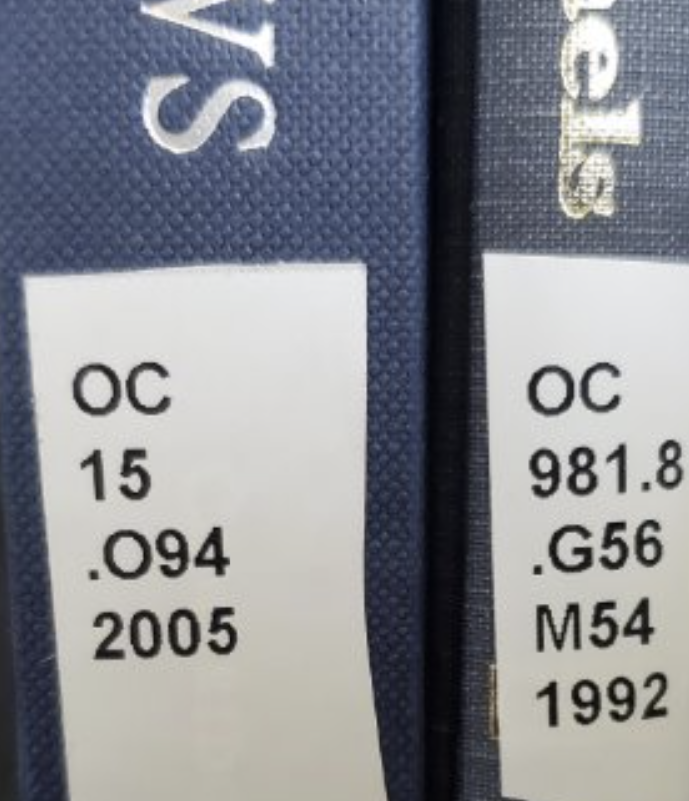LC Call Numbers - Class Range
What is this?

The Library of Congress Classification defines specific call number ranges for various subjects and authors, and not all possible call number ranges (or strings that look like they match the pattern of an LC call number) have associated topics assigned to them. Since they look normal though, they can sneak into the catalog:
DP902 .S4BH801.L8 H8C561 .H6C203 .H43 1852E1838.C2 K3
Why is this trouble?
A call number outside of defined ranges may be a typo or other error in the catalog, for example:
BH801.L8 H8should have beenBH301.L3 H8GE606 .A47 1982should have beenQE606 .A47 1982C561 .H6should have beenCS61 .H6C203 .H43 1852should have beenDC203 .H43 1852E1838.C2 K3should have beenE183.8.C2 K3FE123 .D6 1902should have beenE123 .D6 1902
If the call number in the catalog does not match the label on the piece, it may result in the book becoming lost.
Collection analysis based on call number ranges may not include books outside of defined call number ranges.
Call numbers caught by this search may have additional information in front of them, such as a phrase indicating a collection:
CHEM QD 2014 655652REF Z3301 .S48 1969Call numbers caught by this search may be from other classifications, but marked as LC call numbers in error, such as:
A 57.38:932/25 (SuDoc)WM 420 W8724 1994 (NLM)AV-D10591 (local accession number)FC3097.9.I8 I33 1993 (Library and Archives Canada)Exceptions
Even if classifications are not defined, some libraries may have chosen to use them to organize their collections. For example, the AN classification for newspapers has not been developed, but some libraries classify their newspapers here.
How to Find
This printable document can be taken to the shelf to identify books with LC call numbers out of range: LFT - LC Out-of-Range - no-K.docx
If you are in Alma, there is an analysis to search for this issue in the "Looking for Trouble" folder. Go to the "LC Class Range" folder and look at the analyses for each letter. These analyses do not find all undefined call numbers, but they search before the first and after the last defined letter of each class such as A and PR.